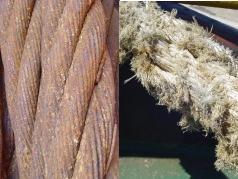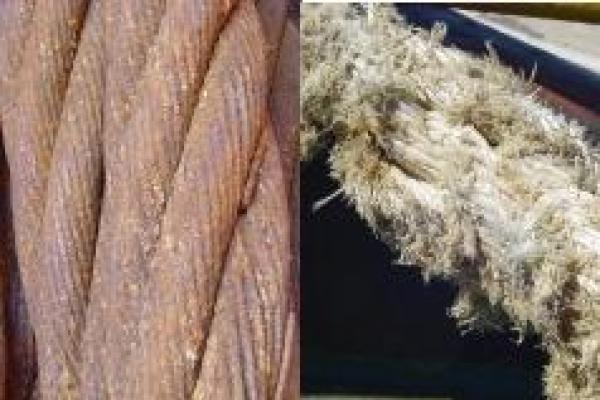
Steamship Mutual
Published: June 01, 2009

Recently the Club has experienced two serious claims for linesman and crew injury due to rope mooring lines parting and striking personnel in the vicinity. In the first incident a mooring line parted and struck two linesmen who were on the wharf adjacent to the hull; It appears that the mooring line had been rubbing on the join between the side shell and the stern plating whilst the vessel was alongside. The rope was worn down to such a degree that it failed catastrophically once load was applied during departure un-mooring operations. The second incident involved another rope mooring breaking which resulted in serious injuries to a crewmember who was standing by in the vicinity.
Members, their managers and crew need to ensure that ropes are cared for, utilised and maintained in line with industry best practice. A planned maintenance system should also be in place ensuring periodic thorough visual inspection of all mooring lines and that these are replaced promptly when unacceptable damage is found.
Mooring Rope Inspection
Apart from a visual inspection by crew prior to berthing and periodic inspections by the watchman whilst alongside, mooring ropes should be periodically inspected along their entire length at least once a month. The wear along the rope should be externally examined and areas of wear and fusing on man-made fibre ropes closely checked to assess the integrity of the rope at these points. Areas of actinic degradation should also be inspected closely to assess the rope’s integrity. Eye splice integrity and eye wear needs to be checked and the strands of the rope opened up to check for internal wear, the pilling of the internal surfaces on a man made fibre rope is an indication of hard use. Mooring ropes, both loose coils used on the bitts and those on winch drums should be end for ended once the working end becomes worn. It is recommended that major damage should not be cropped out and replaced with a short splice as this will reduce the strength of the rope. If there is any doubt as to the strength or integrity of a rope then it should be replaced.
Mooring Wire Inspection
Again, apart from visual inspection prior to use, wire ropes should be subject to periodic inspection by the watchman whilst the vessel is alongside and periodically examined along their entire length at least once a month, a discard criteria should be in place for removal of the wire rope based on a recognised international standard. Normally the discard criteria is based upon the percentage of the number of individual wires within the rope which are broken within a length equal to a multiple of the diameter of the rope, for example one discard criteria is if more than 10% of the wires in the rope are broken over a length of 10 diameters then the wire should be discarded, another is if more than 8% of the wires are broken over a length equal to 6 rope diameters. If the broken wires are concentrated in one strand then the wire discard criteria become stricter, and if an individual wire has worn down by more than a certain percentage, such as 33%, then it should be considered broken for the sake of evaluating whether to discard the wire rope. If the rope is worn such that the diameter has decreased then the rope should be discarded. Again, various standards specify various limits on allowable loss of rope diameter, stating that the rope should be discarded if between 6 and 10% of the diameter of the rope has been lost. Defects such as bird caging, kinking, corrosion and flattening or crush damage should be examined and their effect on the strength of the wire evaluated.
Care for Ropes in Use
In order to ensure that ropes remain in satisfactory condition and free of damage the following points should be borne in mind by crew involved in mooring activities:
• Ropes should not be left exposed to sunlight whilst at sea; they should either be covered or stored below deck.
• Ropes need to be kept clear of the deck to ensure they do no come into contact with any chemicals which may be detrimental to their strength.
• Ropes should be stored clear of sources of heat.
• It should be ensured that all mooring rollers are free turning and are free from damage or rust on their surfaces which could cause rope wear.
• Winch drum ends, bollards and Panama leads need to be free of damage or rust which could cause rope wear.
• Ropes should not be surged on winch drum ends or slacked away by rendering; ropes should be walked back so far as possible.
• Sharp angles in the lead of the rope are to be avoided and it must be remembered that these may exist when the mooring rope runs along the hull between the fairlead and the mooring bollard on the wharf.
• Fibre and wire ropes should not be led such that they cross other ropes, be they either fibre or wire, which could lead to wear during the port stay.
• Wire ropes are to be periodically dressed with an appropriate grease to help maintain their condition.


